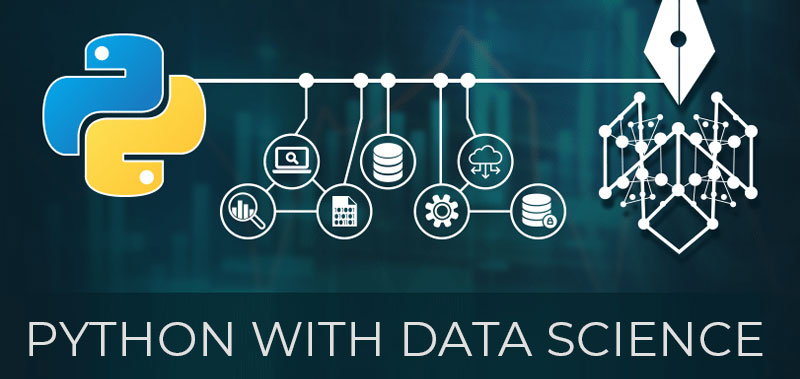Data Science with Python Training And Certification in Patna
Cyber Security Provides Data Science with Python Training And Certification in Patna. Python with Data Science is an easy-to-learn and powerful programming language. This is one of the best reasons for beginners to learn Python. When you first start with python programming language and coding, you don’t want to start with a programming language that has tough syntax and weird rules, as compared to other programming languages. Python is both readable and simple. It is also easier to set up, you don’t need to deal with any classpath problems like Java or compiler issues like C++.
What will you Learn in Data Science with Python Training And Certification in Patna
Data Science with Python Training And Certification in Patna covers 28 comprehensive modules
➜ Module 01: Python – An Introduction
➜ Module 02: Comparisons of Python with Other Language
➜ Module 03: Python Variables & Data Types
➜ Module 04: Operators
➜ Module 05: Python Conditional Statements
➜ Module 06: Python Looping Concept
➜ Module 07: Python Control Statements
➜ Module 08: Python Data Type Casting
➜ Module 09: Python Number
➜ Module 10: Python String
➜ Module 11: Python List
➜ Module 12: Python Tuple
➜ Module 13: Python Dictionary
➜ Module 14: Python Array
➜ Module 15: Python Date & Time
➜ Module 16: File Handling (Input / Output)
➜ Module 17: Multithreading
➜ Module 18: Python Mail Sending Program
➜ Module 19: Database Connection
➜ Module 20: OOPs Concepts
➜ Module 21: Interacting with Networks
➜ Module 22: Graphical User Interface
➜ Module 23: Python Web Scraping
➜ Module 24: Python for Image Processing
➜ Module 25: Python Data Science
➜ Module 26: Intro with Python Matching Learning
➜ Module 27: Artificial Intelligence
About Data Science with Python Training And Certification in Patna
Craw Security offersData Science with Python Training And Certification in Patna, the most thorough Data Science course on the lookout, covering the total Data Science lifecycle ideas from Data Collection, Data Extraction, Data Cleansing, Data Exploration, Data Transformation, Feature Engineering, Data Integration, Data Mining, building Prediction models, Data Visualization and conveying the answer for the client.
➝ Course Level : Intermediate
➝ Language : English, Hindi
➝ Course Delivery : Classroom Training
➝ Include : Training Certificate
➝ Course pdf : Click here to Download

What Client Says About Data Science with Python Training And Certification
Honest Reviews from our Clients and Students
Frequently Asked Question
About Data Science with Python Training And Certification
Is Python enough for data science?
When data science is being mentioned, one programming language comes to everyone's mind which is Python. Python's immanent readability and lucidity has made it relatively easy to use, and the number of dedicated analytical libraries on it can be utilized easily when creating models in dealing with Data Science
Is Python a dying language?
Python is not a dying programming language, it's one of the fastest-growing programming languages. Python programs tend to have minimal templating that you might have seen in other languages. And have more natural constructs for typical tasks you might need to accomplish.
Which Python version is best for data science?
the winner of the Python 2 vs Python 3 battle is clearly Python 3. So if you can choose which one to learn, choose that! With that being said, come and continue learning Python for Data Science
Is Spyder good for Python?
Spyder has useful features for general Python development, but unless you work mainly with IPython and scientific computing packages, you're probably better off with a different IDE. The biggest reason not to use Spyder as a general-purpose Python development environment isn't the feature set, but the setup process.
Is Python data science a stressful job?
Data scientists typically work on data for an entire company, which means scouring through thousands of transactions all at once. “Data science is more exciting and adventurous than stressful,” he says. “It is only stressful when you are working to pay bills, and not to solve real-world problems,” he adds.
